 Earwig
Earwig Earwig
Earwig| St.Helena 1982 | Qatar 1998 |
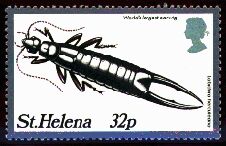 |
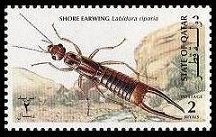 |
|---|---|
| St. Helena Striped Earwig Labidura herculeana (Labiduridae) |
Shore Earwing Labidura riparia (Labiduridae) |
| Senegal 1997 | Cote d'Ivoire 1980 | Malta 2005 |
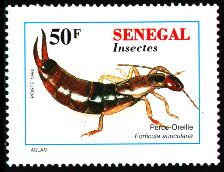 |
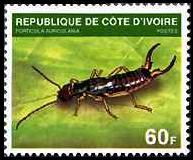 |
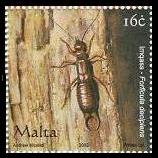 |
|---|---|---|
| European Earwig Forficula auricularia (Forficulidae) |
European Earwig Forficula auricularia (Forficulidae) |
Common Earwig Forficula decipiens (Forficulidae) |
| Comoro Islands 1994 | Comoro Islands 1994 |
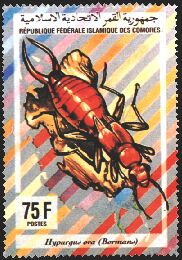 |
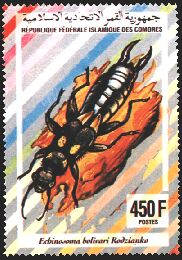 |
|---|---|
| Common Earwig Hypurgus ova (Forficulidae) |
Carcinophorid Earwig Ecbinosoma bolivari (Pygidicranidae) |
The most remarkable feature of earwig is powerful tail scissors without the joint which Okado hardened as the name, and a kind with tail scissors huger than the body also has it. The forms of tail scissors differ with a sex and tail scissors of male are greater than female one and generally are more complicated. Tail scissors is the arms of earwig , and if we will try to catch earwig by hand, a back side tends to pervert and pinch its belly. Tail scissors of a large-scale kind is powerful, and if hand is clipped by tail scissors inserted, hand becomes very painful.
A small kind is 5mm in length, and the maximum kind like St.Helena's giant earwig amounts to 50mm. It mainly lives in surface of the earth, and it is copulated and laid eggs in the hole dug in the bottom of a stone, or underground. Carrying out courting action before copulation and mother earwig's protecting eggs and larvaes and nursing are known.
 NEXT
NEXT
 to Stamp
to Stamp
 to HomePage
to HomePage